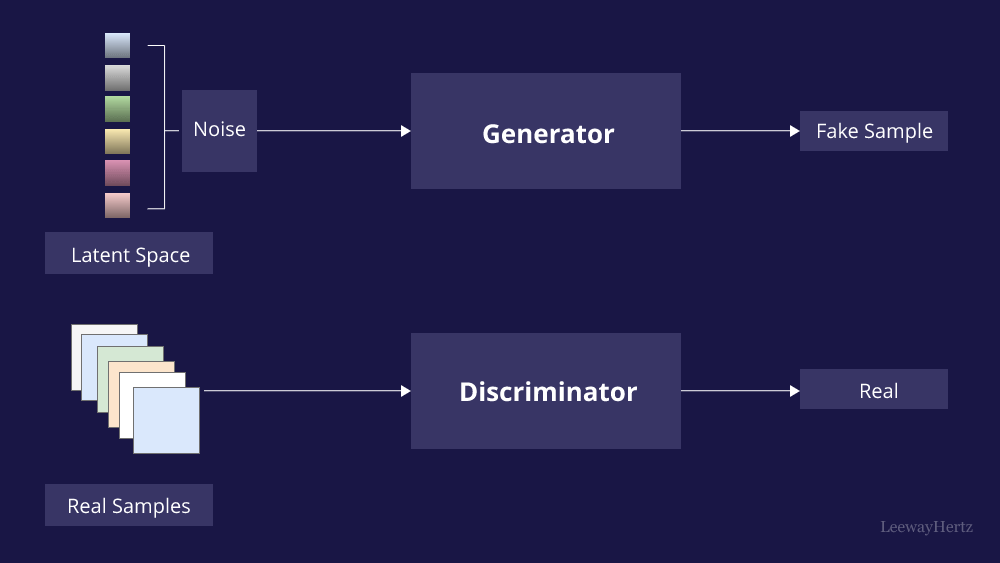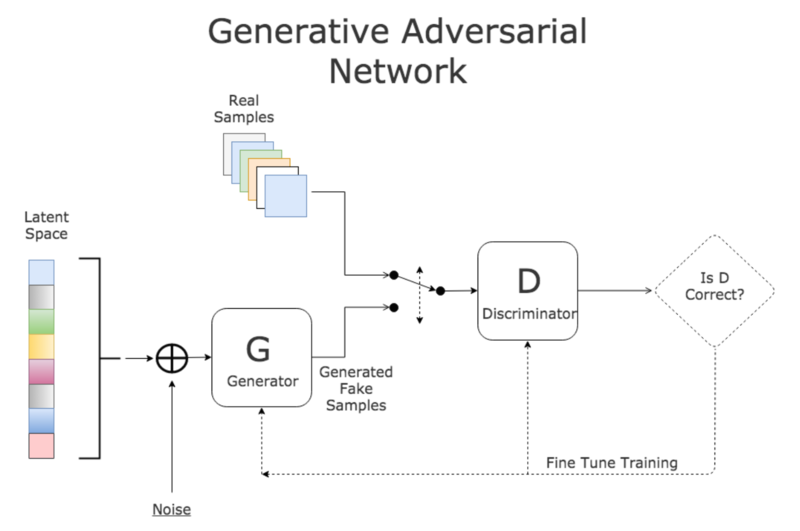In recent years, Generative Adversarial Networks (GANs) have revolutionized the field of machine learning by pushing the boundaries of what machines can create. These powerful networks have gained widespread attention for their ability to generate highly realistic data, such as images, audio, and even videos. If you’re pursuing a Machine Learning Course, understanding GANs is critical, as they represent some of the most innovative applications in the field.
What Are GANs?

At their core, GANs consist of two neural networks that compete against each other: the generator and the discriminator. These two networks are trained simultaneously but have opposing objectives.
- Generator: This network’s goal is to create data that looks as real as possible. It starts by producing data (images, text, etc.) from random noise.
- Discriminator: The discriminator, on the other hand, acts as a critic. It evaluates whether the data produced by the generator is real or fake, essentially distinguishing between the original training data and the generated data.
The two networks are locked in a zero-sum game where the generator continually improves at creating convincing data, and the discriminator becomes better at detecting fake data. This adversarial process continues until the generator becomes proficient enough that the discriminator can no longer tell the difference between real and generated data. For those eager to master this innovative technology, obtaining a Machine Learning Certification is an excellent step toward enhancing your expertise.
The GAN Architecture
To dive deeper into the architecture of Generative Adversarial Networks, the generator typically utilizes convolutional layers to produce high-dimensional data. Meanwhile, the discriminator uses a similar architecture but focuses on binary classification—determining whether the input is real or fake.

Both networks are optimized using a type of gradient-based learning, and the loss functions used in GANs are vital to the training process. The generator’s loss aims to minimize how well the discriminator can identify fake data, while the discriminator’s loss seeks to maximize its accuracy in distinguishing between real and fake inputs.
The table below breaks down the components of the GAN architecture:
| Component | Function |
| Generator | Creates new data based on random inputs. |
| Discriminator | Evaluates the authenticity of data, marking it as real or fake. |
| Adversarial Loss | The function guides the learning process for both networks. |
Challenges with GANs
Despite their revolutionary potential, GANs come with challenges. Training GANs can be difficult and unstable, often leading to issues such as:
- Mode collapse: The generator may produce a limited variety of outputs, reducing the quality of the generated data.
- Vanishing gradient: This occurs when the generator stops learning, as the discriminator becomes too confident.
- Imbalance: The training may lean too much toward one network, resulting in ineffective adversarial learning.
Addressing these challenges requires careful tuning of hyper-parameters and architectural modifications. For example, researchers use techniques such as Wasserstein GANs (WGANs) and gradient penalty methods to improve GAN stability.
GANs in Research and Industry
The versatility of GANs has made them indispensable in both academia and industry. Researchers are continually exploring new ways to harness the power of GANs for real-world applications, from creating photo-realistic images to improving data privacy by generating synthetic datasets that mirror real-world data.
In industries like healthcare, GANs are playing a critical role in medical imaging, assisting radiologists by generating enhanced images for better diagnosis. Additionally, in the entertainment industry, GANs are being used for creating life-like video game characters and movie special effects.
Future Prospects of GANs
As the field of machine learning evolves, Generative Adversarial Networks will continue to lead the charge in machine-generated creativity. While challenges remain, such as computational intensity and training complexity, advances in hardware and algorithms are rapidly addressing these issues. For those interested in advancing their skills, enrolling in a Machine Learning Certification program is a great way to gain hands-on experience with GANs and other cutting-edge technologies.
How to Learn GANs
If you’re excited about learning GANs and exploring their potential, it’s essential to gain a strong foundation in machine learning. Enrolling in Machine Learning Training in Delhi will offer both theoretical knowledge and practical skills to implement GANs.
With a solid machine learning background, you can begin exploring how GANs are applied across sectors and even contribute to cutting-edge research through the Machine Learning Course.
Conclusion
Generative Adversarial Networks represent a powerful advancement in machine learning, with diverse applications ranging from art to healthcare. As you enhance your understanding through certification, you will be well-positioned to leverage this technology in future projects. GANs are not just a trend, they are shaping the future of AI.




